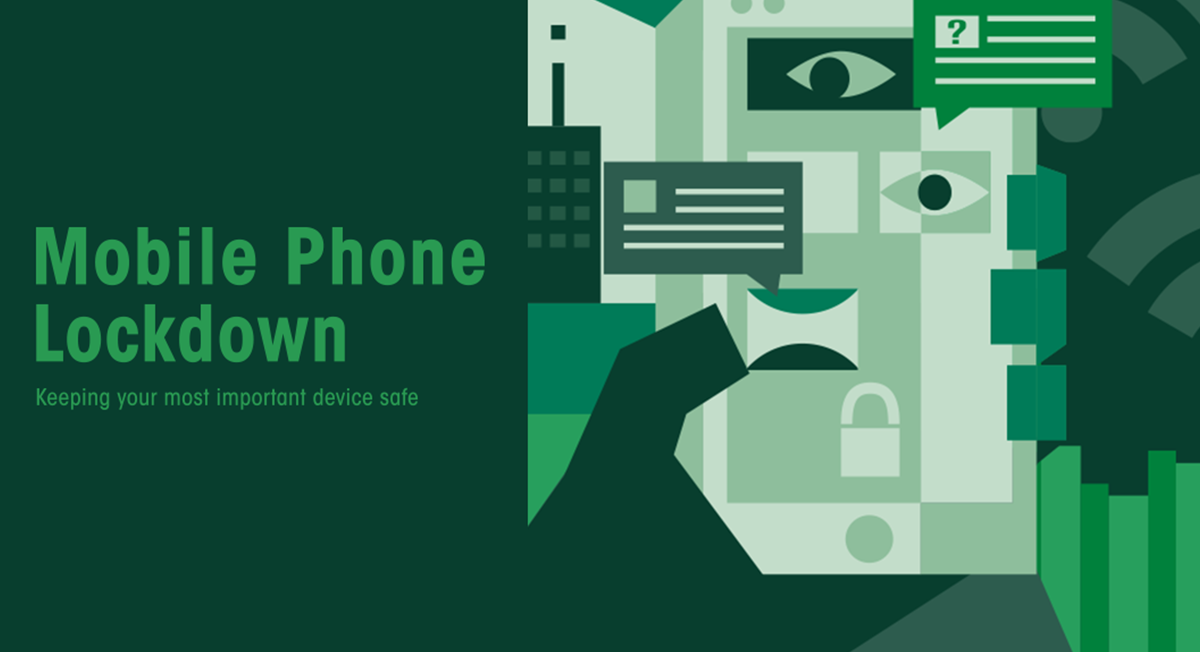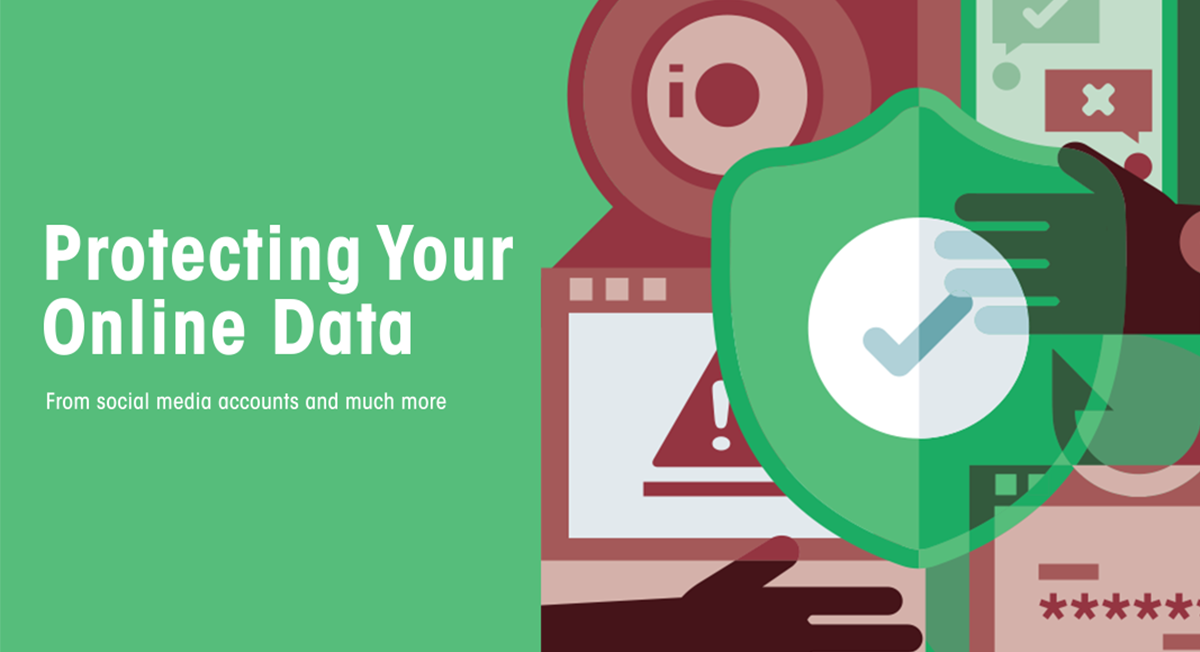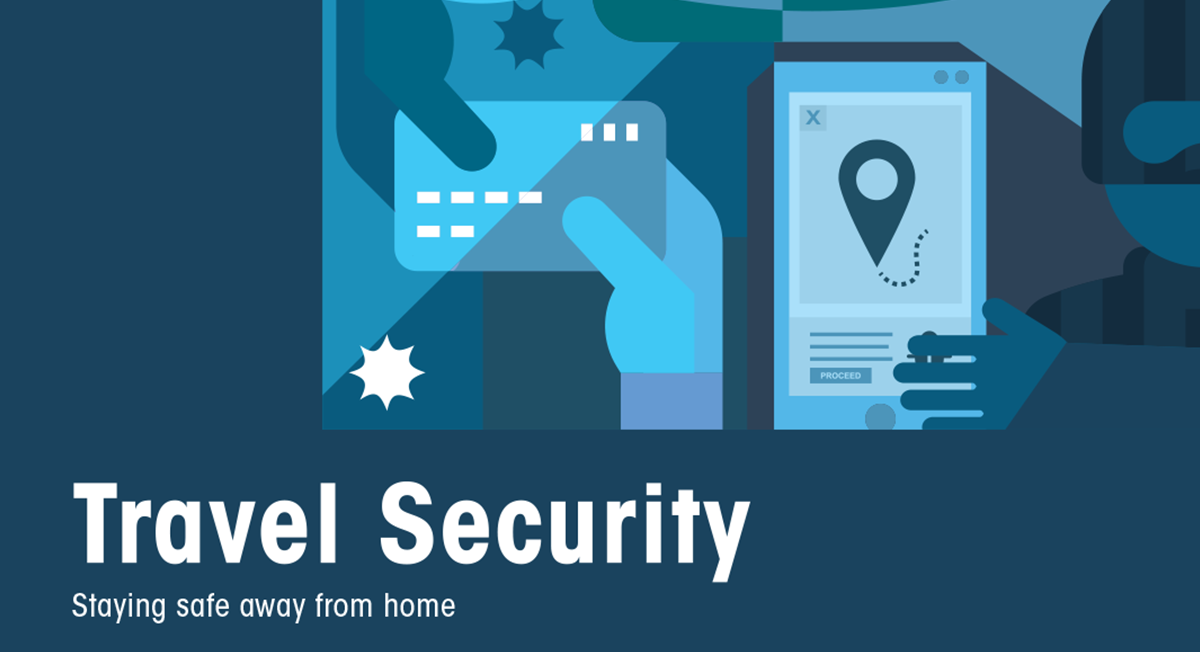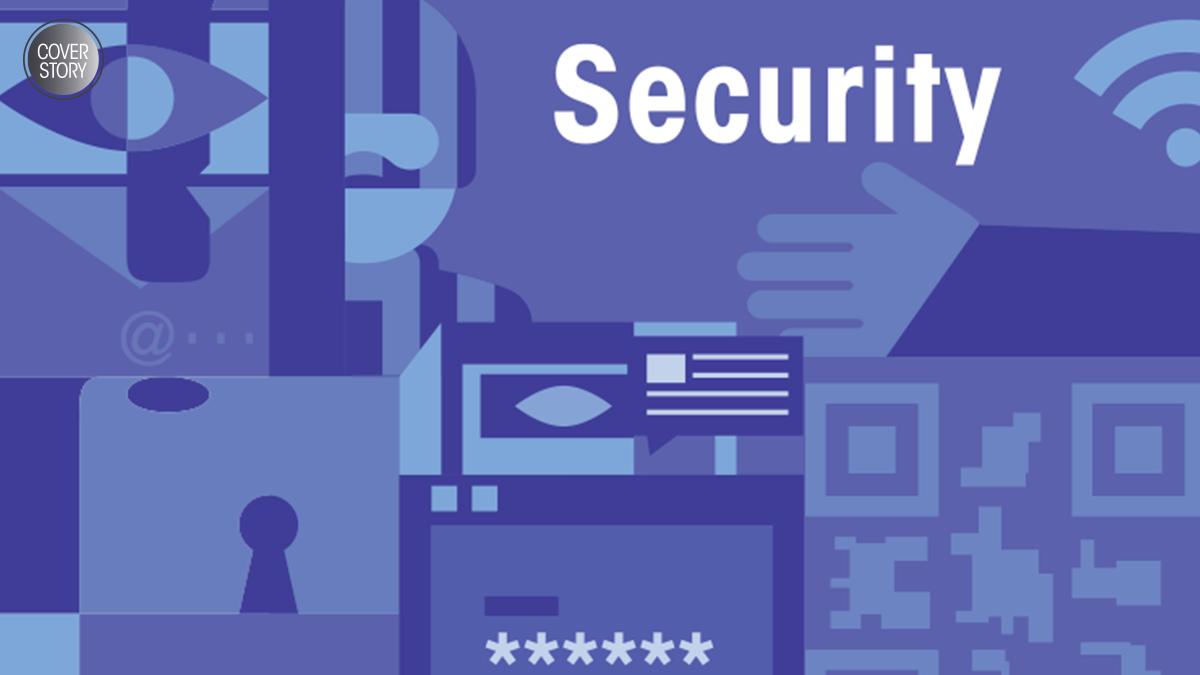Security is a big deal. Cybercriminals work hard to stay one step ahead of security measures, and threats keep changing. From your phone, to your online identity, and even at home or abroad, there are things you should consider to keep you, your possessions and, most importantly, your information safe. We’ve tried to compile a list of threats and solutions so you can stay secure. You can’t be too careful. It’s a dangerous world out there.
MOBILE PHONE LOCKDOWN
By Ren Alcantara

In this age of hyperconnectivity, our phones serve as the key to unlock a whole world of possibilities. Our finances, access to a myriad of accounts, and even identity information are so closely tied with our phones, that it’s an extremely tempting target for people with malintent. Given that we use our phones much more than any other piece of technology we own, we should take the time to keep this critical device and, therefore, ourselves, safe.
Physical Theft
This is as straightforward as it gets. When it comes to tech security, once the bad guy has physical access to your device, it’s usually game over. At best, you’ve lost a pricey device forever. At worst, and depending on how determined the attacker is, all the data on the device including the sign-ins and sensitive info can be made accessible, and you’ll have to go through the whole process of re-securing everything before anything bad happens. Losing a phone isn’t fun, but the real problem is if the thief gets access to your data.
The solution for this is thankfully quite simple. Aside from the obvious step of always keeping your device somewhere it can’t just be picked up and locking it with a PIN, there are a few things you can do to make sure the unfortunate occurrence of losing your phone is nothing more than an inconvenience.
Android and iOS both have built-in ways of tracking your device. If you think you might just have left your device somewhere, Android Device Manager and Find My iPhone can be used to track down the missing device as long as it has a connection to the Internet. Hopefully, it just tumbled out of your pocket, and you can get it back with no problem. There are even functions that allow you to make the phone ring to help narrow your search down if you’re in the area but unable to see the device.
Should the device be offline shortly after you lost it, and you know it had power and an internet connection, that might mean that it has been taken, and whoever found it has little intention of reuniting you with your device. This isn’t a great spot to be in. Should this happen to me, I do have a plan in place. The same Android Device Manager and Find My iPhone services allow you to do a remote wipe of the device. You still lose your phone, but at least that’s about as bad as the situation will get. The thief may still be able to use your phone (unless it’s an iPhone), but at least your data will remain inaccessible. With everything on the cloud, you probably won’t feel too bad about that anyway. It’s very much a nuclear option, so think about your decision before you let it rip.
Malware
Phones are essentially computers, and computers will always be a target for all sorts of malware. Malware can come in many shapes and forms, from annoyances that pop ads up or hijack your browser, all the way to more sinister programs that quietly and secretly steal information in the background without letting you know. Once again, it’s your information that’s most at risk and what’s worse, it’s possible you won’t know there’s anything wrong until the damage has been done.
Protecting yourself from the threat of malware takes a change in behavior and a little help from anti-malware programs. Firstly, don’t go installing dubious programs on your device. Google and Apple do a reasonably good job of filtering available apps in their respective app stores, but it’s not foolproof. When you install apps, take a look at the permissions the app requires of your device. If something doesn’t line up, say a game that has no need for camera access asks for it, consider a different app. For Android users, disable the ability and disable the ability to install apps from unknown sources unless you absolutely know what you’re doing. It also makes perfect sense to stay away from questionable websites, and be careful about links and QR codes that you come across—they don’t always lead to trustworthy destinations.
Mobile anti-malware programs are also not a bad idea. Sure they use up some system resources, but it’s worth it for the peace of mind. Do a quick internet search, find a reputable one that suits your needs and budget, and go with that. On a related note, keep a backup of your data online with your phone’s built-in backup utility. Should you need to wipe your device to try and rid it of any malware, this will save you the inconvenience. just know that you might be restoring malware along with the good data, so anti-malware apps are still necessary in this case.
Wi-Fi related Attacks
Cyber criminals know that users generally don’t want to blow through all their mobile data, and will want to connect to free Wi-Fi when available. This gives them two ways to attack: first, connecting to unsecured Wi-Fi in public places puts users at risk, with bad guys being able to intercept information going through. Secondly, they can themselves set up a convincingly realistic free Wi-Fi access point, one that requires the user to register an email and password, and then take those usernames and passwords knowing that most people recycle that information for many different digital logins. Once again, your data can be compromised when the baddies log in to your various accounts and take whatever they want.
You can get around this by not connecting to public hotspots unless absolutely necessary. If you really need to, don’t do anything that will reveal important login info, such as online purchases, banking, or anything of the sort. Should you need to log in, don’t use a password that keeps your other accounts secure. If it does turn out that the free Wi-Fi was out to get your info, you’ll at least not reveal a username and password combination that unlocks anything else.
These are just some of the threats present in the mobile space. Be smart, be careful, and use the technology available, so that your tech continues to work for you, and not someone else.
PROTECTING YOUR ONLINE DATA
By Jewel Sta Ana

As people living in the digital age, we are more prone to online threats that jeopardize our security. With a single wrong tap or click, cybercriminals can gain access to someone’s personal and financial information which can then be used to access online bank accounts or worse, steal an identity. Without prevention, these threats, can get out of hand and cause severe inconvenience. Awareness is the first step to staying safe. We list some common personal online threats that you may encounter and solutions to ensure data security at all times.
Phishing schemes
The most common on the list, Phishing is defined as a fraudulent method of obtaining sensitive information such as usernames, passwords, or credit card details using deceptive emails and websites. At first glance, these websites look exactly like the original ones, which is why so many people fall for it.
Most of the proponents of these malicious sites copy the logo, name, and format of the website of a financial institution such as a bank, leading to a number of online security breaches. Once they have the user’s personal data, they can easily log in and gain access not only to your bank account but possibly your other online accounts as well, as users tend to reuse emails and passwords. Phishing attacks are also usually done on service providers with large user bases such as e-commerce and social media websites.
To avoid getting caught up on this modus, always check the legitimacy of the website. Official websites mostly use data encryption, showing a padlock icon on the address bar and commonly begins with https://. Checking the source of the information from your email is also a good idea. Don’t carelessly click on hyperlinks attached to emails, as those might direct you to fraudulent websites, and do not disclose confidential information via email or messaging apps.
Adware
It’s annoying when an online ad pops onto your screen, but it’s more irritating when it keeps on buzzing and bombarding your otherwise well-behaved browser. If it keeps on happening, chances are your device is infected with Adware, an unwanted software designed to throw ads up on your screen while peacefully browsing the web. Why does it even exist? The simple answer is the revenue generated for developers by showing ads.
There are two main ways by which adware sneaks into your system: it’s either embedded on the free downloaded program you recently installed, or linked from website infected with adware. Either way, both types run without permission from the user and can collect your data including browser history, IP address, search queries, and web pages visited. The data can then be used for profiling in direct marketing, and may make your computer slow and unstable.
Being cautious about opening websites on the Internet is a good habit to develop. If you’re downloading any freeware or shareware, make sure that you access these programs from trustworthy and reputable websites to avoid infection. It is also highly recommended to update smartphones, tablets, and laptops regularly and avoid clicking on any notices or ads while browsing.
Hacking
Whether you’re a Hollywood celebrity or an ordinary netizen, you can be a hacker’s victim. Hacking is a very technical and broad term that refers to unauthorized access to and control of a mobile device, computer, or network. Usually driven by personal motives, or simply because they can, hackers aren’t just rogue programmers who are skilled at modifying computer hardware and software. They can use psychology to their advantage and trick their target into clicking a link to a malicious website, or providing personal data.
Sometimes, simple things like forgetting to logout of your email or social media accounts on shared devices may also lead to hacking.
Hacking usually occurs with malicious intent. Most of the time, it is done for corporate espionage and criminal financial gain, to tarnish someone’s reputation, steal an indentity, defraud banking systems, or make confidential information public. When your personal data gets in to the wrong hands, your safety and privacy are in danger.
One way to steer clear from this threat is to log out of all social media, email, and online banking accounts after using shared devices. It is also helpful to choose strong and discrete passwords for your various online accounts. Activating two-factor authentication and using a password manager adds another layer of security, making it harder for the attackers to access personal accounts.
Cyberstalking
When stalking is done online and involves the repeated use of the Internet or other electronic means to harass, intimidate, or frighten a person or a group, it is considered Cyberstalking. It’s quite different and much more sinister from what we do to our crush’s social media accounts. The former usually includes false accusations, derogatory comments, and threats.
Most suspects create another identity through social media sites using fake names, photos, and locations before approaching and making contact with the target. Once they have successfully followed and befriended the victim online, they can now monitor their target’s physical and online activities. This puts easy targets into physical peril. The next thing you know, someone has broken into your home, stolen your belongings or worse.
As with many things in life, it’s better to be proactive than reactive when it comes to cyberstalking. As much as possible, avoid disclosing personal information with strangers online. If someone adds you on your social media accounts, check their profile first before tapping the approve button. Maintaining good digital hygiene would also help in keeping your account private. Keep your profile low-key without revealing sensitive information about your whereabouts, out-of-town trips, address, mobile and phone number, and birthday. As much as possible, do not use your full name on your accounts.
Nowadays, being vigilant doesn’t just apply to the physical environment. Always keep in mind that as digital natives, having an awareness of the dark threats on the web is not just an edge, it also brings responsibility because at the end of the day, you are in charge of your own safety. Prevention would always be the best first defense.
TRAVEL SECURITY
By Gabriel John Pe

Traveling has become easier in the last decade as advances in technology have made the experience safer and cheaper for people. However, with more people moving, security risks have also increased. Here are some risks and how to avoid them.
Card skimming
Card skimming and other related fraud is the most common complaint when traveling abroad. This kind of scam usually happens in developing countries where there’s a steady stream of tourists. Card skimmers use a skimming device to copy the data from your cards, so physical access is necessary for this to happen. To avoid being a victim, refrain from using your card in suspicious-looking establishments and areas. Also be alert when paying with your credit card, and don’t let it leave your sight while paying.
Another method of avoiding credit card skimmers is by using your e-wallets. Most e-wallets only use debit which means you’ll only lose the amount loaded into your account. Despite most retailers now accepting e-wallets, there are still those who prefer credit cards, so search for e-wallet providers that have physical cards linked to the user’s account for both convenience and safety.
Another sure-fire solution when travelling is to pay in cash. Carrying cash around does sound scary, but keeping your cards out of the equation completely should keep them safe.
Theft or Physical Attacks
We’ve all heard the horror stories. A friend of a friend is enjoying their vacation when a snatcher takes their phone and makes a run for it, or a robber threatens them at gunpoint. Physical threats cannot be completely eradicated. Most of these incidents occur in cities with large populations and dodgy neighborhoods, so plan ahead and stay away from areas that are known to be prone to crime, and wherever you are, stay away from secluded areas.
The best way to avoid these petty crimes is usually by moving in groups. Tours are a great way to be with a group whether you are travelling alone or with friends.
Avoid showing off your wealth. When travelling, try to limit showing your wallet and other valuables as much as possible. Bringing an extra dummy wallet where you can keep a small amount of cash for your souvenirs and other fees is a more roundabout, but equally effective way to foil would-be petty thieves. Manufacturers also offer reinforced, slash-proof bags that can resist a quick swipe from a pickpocket’s blade, and have cable-strengthened shoulder straps to fend of the dreaded cut-and-run.
Apart from securing your valuables, it also helps to do some research before heading somewhere. Knowing where local authorities are located and how to reach them is important when instances of physical threats are common. When travelling to another country, take note of the location of your home country’s embassy. That will be most helpful when dealing with stolen documents such as passports and identification cards.
ATM Scams
While not entirely criminal by definition, something to be aware of when traveling overseas is the common ATM. Worldwide, cash is still the most accepted form of payment, particularly for more far-flung areas or small tourist attractions.
If you’re overseas and withdrawing from your home bank account, be aware that foreign banks will usually add a surcharge for the international transaction. This can range from a reasonable few bucks, to an exorbitant amount that may at times be greater than what you’re trying to withdraw in the first place. There’s also the matter of the conversion rate, which varies daily, and should be something you should look at before completing the withdrawal.
More unscrupulous banks will try to get you by charging an unreasonable transaction fee, providing much lower than average exchange rates, and forcing you to take out large sums of money at a time through fixed withdrawal amounts in a predetermined menu. This is unfair, and takes advantage of tourists specifically.
The best idea is to get enough cash before you head out, and if the need arises, just be aware of the charges and tricks banks attempt to bleed you dry. There’s nothing wrong with using an ATM overseas, just as long as you know what you’re getting into.
Travel is a great way to broaden your horizons and experience different cultures. It’s a great time to be able to do so, and to have the best trip possible, take the time to look at the threats, and learn how to avoid them.
Words by Gadgets Team | Artwork by Jezeil Romero
Also Published in GADGETS MAGAZINE – October 2019
